 Your new post is loading...
 Your new post is loading...
Nearly two-thirds (63%) of smartphone users worldwide use their device every at least once every 30 minutes, according to an IAB report published today (June 13), with ad recall on such devices registered at 86% on mobile web, and 90% in-app. The findings were released in the trade body study entitled ‘Always On – A Global Perspective of Mobile Consumer Experience’, which surveyed users across the globe and found that over a fifth (22%) tap into their phones every five minutes. Respondents came from North and South America, Asia, Europe, and Africa with the majority of them reporting that they access the internet via mobile web and mobile apps at least once a day (mobile web – 88% and mobile apps – 84%). Meanwhile, awareness of advertising on both mobile web and on mobile apps was high among respondents, with nearly half claiming they took action after seeing ads on such devices, with the two platforms performing similarly in generating consumer response (45% on mobile web and 47% on mobile apps)....
Mobile marketing's awesome potential in 2017 is reinforced with reports like this one: research firm BIA/Kelsey predicts that US mobile-ad spend will exceed $40 billion -- and the industry can expect that number to pass $65 billion by 2020. Last year, mobile digital ad-spend fueled mobile-side growth on a path to outpace desktop ad-spend. Meanwhile, smartphones and tablet devices account for 51.3% of Internet use. By year's end, 75% of online content consumption will be mobile, media buying agency Zenith forecast late last year. Numbers like these tell the story: for mobile marketing, a moment of transformation is at hand.This transformation will bring with it the following five trends -- changing how brands and marketers work with each other, with technology and with consumers....
It’s been a year of milestones for mobile, and it appears that another threshold will be reached this year: mobile devices are close to capturing the majority share of US online ad revenues, according to the latest revenue report [pdf] from the IAB and PricewaterhouseCoopers. Indeed, mobile devices accounted for 47% share of online ad revenues in the first half of this year. That’s a huge jump from 30% share of revenues during the first half of 2015. With mobile advertising growing at a rapid pace – up 89% year-over-year in H1 – it’s not hard to imagine that they’ll claim a majority of online ad revenues by year’s end. Overall, online ad revenues increased by 19.1% year-over-year during H1 to $32.7 billion, though growth was not distributed evenly across formats: - Desktop search spend decreased by 12%; share of total spend declined to 27%; - Mobile search spend more than doubled (a 105% increase)....
Measured by shopping channel experience, here’s the breakdown of where smartphone owners are very satisfied: :60% -- Store56% -- Desktop47% -- Mobile24% -- Social. This matters, since almost three quarters (73%) of smartphone owners spend five or more hours a week using their phone to research products, find stores or make a purchase, and more than half (51%) spend 10 hours or more. As yet another indicator that mobile influences sales well in advance of a store visit, more than half (55%) of smartphone owners said they researched products via mobile prior to visiting a store. When they get to the store, that doesn’t mean a sale there is inevitable. More than four in 10 (42%) researched products and alternatives on their smartphone during a store visit....
Our industry faces a well-known duopoly, with Facebook and Google commanding an ever-increasing share of digital ad spend, both in the U.S. and globally. I recently dug into the data and forecasts available, to better quantify (for my own benefit and hopefully yours!) just how much Facebook and Google are eating digital.
Global ad spend, across all channels (digital, TV, print, radio, outdoor, etc.) is growing annually on average by 5.6 percent from 2015 to 2020, and will reach $674 Billion from $513 Billion in 2015.
The U.S. market will represent 35 percent of the global ad market, reaching $234 Billion by 2020 with a slightly slower growth rate compared to the global average, at 5.0 percent from 2015 to 2020. This is expected as rapidly developing markets in the East and a growing middle class represent new markets on which advertisers can focus.
45% Of U.S. Ad Spend Will Be Digital
33 percent of ad spend in the U.S. was digital last year and that is expected to reach 45 percent by 2020. In real numbers, that’s a $60-billion market growing to $105-billion, with a Compounded Annual Growth Rate (CAGR) of 11.9 percent.
The growth of digital is more than 2 times higher than the growth of the overall ad market, which represents a tremendous opportunity for digital businesses. More people are accessing content online and more advertisers are spending their budgets online. Will the rising tide lift all ships?...
If recent marketing news has made one thing clear, it’s this: Mobile is non-negotiable. A growing number of us are using mobile as our primary device for accessing the internet --over a quarter of us interact with our smartphones more than any other object, or human being, for that matter. And content, in kind, has to fit that format, whether we’re consuming it or discovering it for the first time. Brands are starting to respond to that. Just last week, for instance, Google announced that non-mobile friendly pages will be ranking even lower next year. Apps will be especially impacted most by this increasingly widespread mobile use. The push notifications we receive on our devices will play a vital role in the information we come across, and if we choose to consume it....
Mobile search is essential. In fact, according to Forrester’s Mobile Audience Data, Q4 2015, 87% of US smartphone owners rely on browser-based search on mobile devices. And the data reveals that Google’s search engine is the most common path to a mobile site even for well-known brands such as Amazon, Walmart and Kmart. As a top discovery resource, companies can’t afford to wait any longer to implement a mobile-first search strategies. The biggest seen mistake today? Either lacking a strategy completely, or treating mobile search the same way as desktop search. As Forrester Research’s Dr. James McQuivey says, “When businesses first adopt a technology, they do old things in new ways. When they internalize a technology, they begin to do new things.” Consumers use mobile phones very differently than they use desktop computers. So must Marketers. Forrester conducted an in-depth analysis of how consumers use Google search on mobile versus desktop devices to parse-out how consumers use the two devices differently. Today, Forrester finds that consumers purchase a range of categories on their smartphones: insurance, travel, financial services products, and even pet food. For this research we focused on the travel category because consumers are so likely to research and book travel on mobile devices – Forrester’s Mobile Audience Online Survey, Q4 2015 reveals that 29% of mobile users have purchased hotel rooms and 22% an airline ticket on their smartphone....
In 2014 the number of mobile users eclipsed desktop users. Since then, mobile technology has continued to change the way we browse the web and connect with brands. “The latest data shows that we are now well past the tipping point.” says Smart Insights, as “mobile digital media time in the US is now significantly higher at 51% compared to desktop (42%).”
Today, 80% of internet users own a smartphone and consumers are “multiscreening” (browsing on both mobile and desktop devices), meaning it’s more important than ever to create consistent experiences across devices. This is about more than simply making your site mobile responsive. It means thinking about how the vertical screen changes the way we write and structure content.
Below we debunk 3 myths that mislead content marketers when writing for mobile so you create better content, regardless of the screen size....
I was struck by the recent research that 60% of clicks on mobile banner ads are accidental. The main contributing factor was identified as fat finger syndrome. With mobile on track to become the third largest advertising medium, accounting for 12% of all ad spend, that’s an enormous disconnect. Of course it’s not fat fingers that are to blame. It’s the state of mobile design....
There's more evidence to support the growing importance of mobile devices along the path to purchase.
According to Nielsen's fourth-quarter 2015 Mobile Wallet Report, 37 percent of respondents said their purchases start with mobile shopping more than one-quarter to half of the time.
The report compares mobile use from the fourth quarter of 2015 to the same period the year before. It found that shoppers are using mobile devices, particularly smartphones, to assist with in-store sales more frequently than for online shopping.
Roughly 72 percent are researching an item or checking prices on a smartphone before buying. Store locators are popular with 60 percent of smartphone users, and 55 percent are using mobile coupons.
Reviews are popular with slightly more than half of all mobile device users and 44 percent of smartphone users use digital lists while shopping....
Dive Brief: - Kitewheel took stock of more than one billion brand and customer interactions on its platform, which revealed that marketers are in fact taking advantage of omnichannel campaigns.
- Social media led the way in interactions at 48%, while mobile apps were the fastest growing channel for interactions, and email (23%) is up 270% year-over-year.
- Even though social media accounted for the most interactions, the research also found that 70% of marketers are still using the channel for broadcast messaging rather than more tailored and targeted campaigns....
The latest example of this deals with mobile coupons. It turns out that consumers who lean on mobile coupons for food shopping – and that’s a lot of people – often change brands for the sake of variety, according to a new study. The majority of consumers don’t use mobile coupons, but a third (33%) do. And that’s where the behavioral change potential resides. Nearly half (44%) of mobile coupon users like to change brands often for the sake of variety and novelty, according to the study conducted by GfK. The survey comprised a look at 6,500 products in about 600 categories....
I quite like this provocative sausage dog picture because it forces marketers to think differently about responsive web design (RWD). More often than not, marketers scale content down to fit a smaller screen; because they then claim that they use RWD and have some mobile apps, they think they have checked the mobile box. In fact, RWD was by far the most common tactic that marketers were using or planning to use in 2015: Only 9% of marketers we surveyed are not planning to use it. When fully implemented, RWD can improve the user experience, but more often than not, it’s implemented as a quick fix to the problem of multiple screen sizes. It often prevents marketers from thinking about the need to contextualize offerings for different devices. Customers do not necessarily want the same content across all their screens. However, a scarily high percentage of marketers we surveyed — 47% — admit their mobile services are primarily a scaled-down version of their PC services....
|
In 2017, every business should focus on mobile, Rich says, especially businesses with physical locations and a local audience. Mobile is important because people always have their devices by their side. For example, when Rich takes his daughter to volleyball practices in different towns, he uses Waze on his phone to get directions. Then after dropping her off, he goes to Yelp to find a coffeehouse or asks Google or Siri to find the nearest supermarket so he can go shopping. While he waits in line, Rich explores Facebook, Twitter, or Instagram; plays a game; or reads a news article. Mobile local marketing helps you reach customers who are on the go near your location. Because people are always on their phones, local businesses can attract customers who are looking for information on the go and making immediate decisions. If those people are in your area, you can capture their business with a strong mobile presence....
Mobile advertising has grown faster than any other medium in the last four years and is now a significant proportion of online advertising revenue. Initially, it struggled to match the success of mobile app usage and consumer spending. Early mobile advertising formats such as banners have been borrowed from other online media rather than built to best exploit the very different mobile medium. While older formats may have been relatively easy to implement at scale, they have not been built to address the challenges and take advantage of the opportunities that mobile provides. Third party in-app native will continue to grow, at an annual average rate of 70.7% While first party in-app native will continue to be the largest revenue driver, third party in-app native will continue to grow, at an annual average rate of 70.7% and will account for 10.6% of all mobile display advertising at $8.9bn by 2020. However, the paths to adoption of native advertising vary for different types of mobile publishers. A flexible approach which puts the user experience at the heart of the advertising strategy is crucial for the success of native....
Three out of every four minutes (75%) of Internet use will be accessed via a mobile device in 2017 -- up from 68% this year, according to a mobile advertising forecast released this morning by Publicis’ Zenith unit.
The report estimates that mobile’s share of global Internet usage will reach 79% by 2018, nearly doubling since 40% in 2012.
The report, the first from Zenith to focus exclusively on mobile advertising and technology trends, covers 60 countries worldwide.
In terms of individual markets, Spain (mobile = 85% of Internet) ranks No. 1, followed by Hong Kong (79%) and China (76%). Mobile’s share of U.S. Internet usage is 74%....
Philipp Schindler was Google's ad chief for years, but few would know it. Having hailed from Germany, Schindler spent a good portion of his 11 years at Google running its European business before quietly ascending to global chief business officer 13 months ago. Now, for the first time in this role, he sat down with Adweek as he prepares to take the stage on Monday to address the industry at Advertising Week.
Schindler predicts his three favorite "revolutions"—mobile, video and programmatic—will be so common that by 2020 "we will actually look back and laugh that we called them revolutions."
Per Google, two-thirds of smartphone users say they turn to their devices to learn about a product or service after seeing a television commercial.
With that in mind, the 45-year-old exec and his team will unveil to the Advertising Week audience a platform that allows brands to see how YouTube ads compare to TV spots for smartphone searches. Google data will show how its YouTube videos outperform linear TV by two times. "We're the prime time for the mobile world," Schindler proclaimed....
Mobile applications are responsible for 80 percent of digital growth and while they take up a massive chunk of all time spent on mobile, a report from comScore suggests that app marketers will have to work harder to cut through to the consumers they want to reach. According to the report, mobile represents two out of every three minutes spent on digital media in the U.S. If brands and marketers want to capture that huge amount of time consumers spend on mobile devices, they will have a lot to compete with....
Mobile search is essential. In fact, according to Forrester’s Mobile Audience Data, Q4 2015, 87% of US smartphone owners rely on browser-based search on mobile devices. And the data reveals that Google’s search engine is the most common path to a mobile site even for well-known brands such as Amazon, Walmart and Kmart. As a top discovery resource, companies can’t afford to wait any longer to implement a mobile-first search strategies. The biggest seen mistake today? Either lacking a strategy completely, or treating mobile search the same way as desktop search....e
Today, 80 percent of internet users own a smartphone, and consumers are "multi-screening" (browsing on both mobile and desktop devices). EThat's why you must create consistent experiences across an array of devices. "The latest data shows that we are now well past the tipping point," says Smart Insights, as "mobile digital media time in the U.S. is now significantly higher at 51 percent compared to desktop (42 percent)." This is about more than simply making your site responsive to mobile devices. It means thinking about how the vertical screen changes the way we write and structure content. Below we debunk three myths that can trip up content marketers writing for mobile:...
Mobile video ads are poised for massive growth in the next five years. Revenues from these ads will grow from $3.54 billion in 2015 to $13.3 billion in 2020, which marks a 30% compound annual growth rate (CAGR), according to PwC's annual Global Entertainment and Media Outlook report. This means that mobile video ads will be the fastest-growing digital ad segment in the next five years. They will easily surpass desktop Internet video ad revenues, which are expected to grow at a 19% CAGR through 2020. Furthermore, revenues from mobile ads are set to surpass revenues from desktop video ads this year, with $5.6 billion for mobile and $5.1 billion for desktop, according to the report....
Coupons are quickly growing as a significant component of beacon-enabled proximity marketing thanks to strong redemption rates, with brands and retailers forecast to deliver 1.6 billion coupons a year by 2020, according to a new report from Juniper Research.
The results point to how proximity marketing is gaining traction as retailers look to engage more deeply with consumers in and around their stores, prompting the volume of beacon-enabled coupons to grow quickly from the 11 million expected to be delivered in 2015. However, the research also underscores the potential danger of turning beacons into nothing more than another offer channel, which is likely to cause shoppers to lose interest.
“I would imagine that coupons will represent a key plank of any beacon-based proximity marketing strategy,” said Dr. Windsor Holden, head of forecasting and consultancy at Juniper Research as well as author of the report....
For many Americans, smartphones are as much a necessity in their daily lives as the air they breathe and the food they eat. These devices are constant companions, helping us take care of just about everything we need to do each day—watching our favorite shows and movies, keeping up with our friends, learning new languages and managing our finances.
And spending money is no exception!
In addition to growing as a new purchase channel, mobile commerce offers a plethora of opportunities for marketers and advertisers looking to reach their desired consumers. According to Nielsen’s fourth-quarter 2015 Mobile Wallet Report, 37% of respondents said their purchases start with mobile shopping more than one-quarter to half of the time. However, the competition is fierce, and in order to maximize these opportunities, marketers must know the best ways to position their products and communicate with appropriate audiences.
Consumers handle a lot of their shopping activities on their mobile devices, and everyone knows that savvy consumers do their due diligence before handing over their cash. In fact, 72% of smartphone shoppers research an item before purchasing it, 70% check the price of an item and 60% use a store locator to find a store where they can buy their desired product of choice....
Remember Mobilegeddon?
The name given to the Google update that caused many websites to start worrying out of fear of low search engine rankings.
Marketers and business owners everywhere scrambled to rid their websites of flash and began frenzied campaigns to optimize their websites for mobile devices.
The dreaded Google update rolled out on April 21, 2015 and yet websites that look like this still exist on mobile...
A new study on native advertising from Facebook and IHS Inc. accompanies new stats from Facebook on its Audience Network — the mobile ad network that recently branched out from in-app to mobile web publishers. According to the new report, by 2020, media buyers will spend $84.5 billion on mobile advertising with mobile accounting for 75.9 percent of all digital ad spend globally. Native will be as significant driver of mobile ad growth. Native in-stream ads will drive 63.2 percent of all mobile display advertising at $53 billion by 2020. The study anticipates third-party in-app native advertising (ads not running on Facebook) will be the fastest growing ad format in digital advertising and will grow at 70.7 percent compound annual growth rate between 2015 and 2020 to account for 10.6 percent of mobile display ad spend....
|



 Your new post is loading...
Your new post is loading...




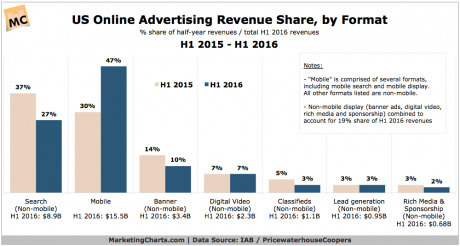

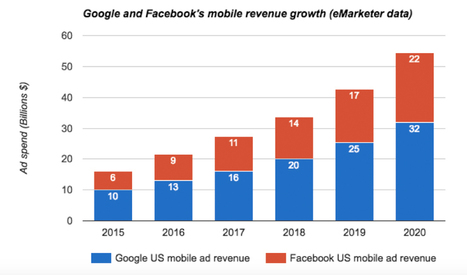
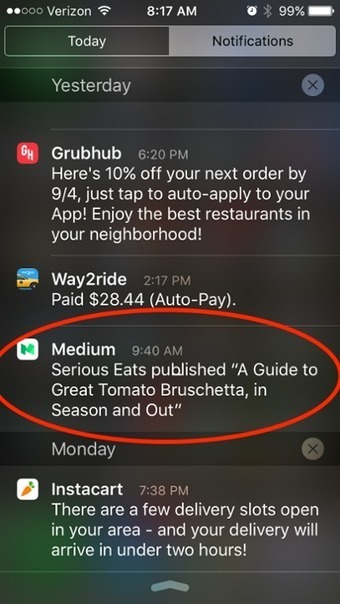


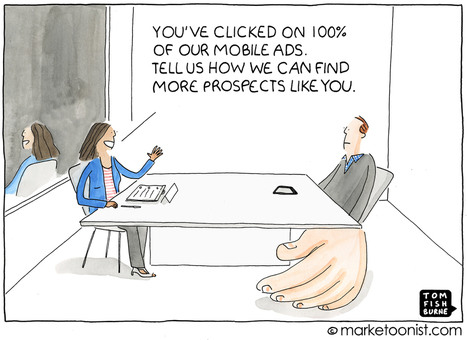



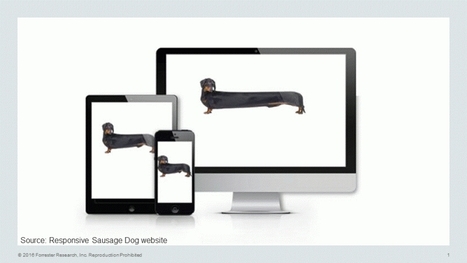
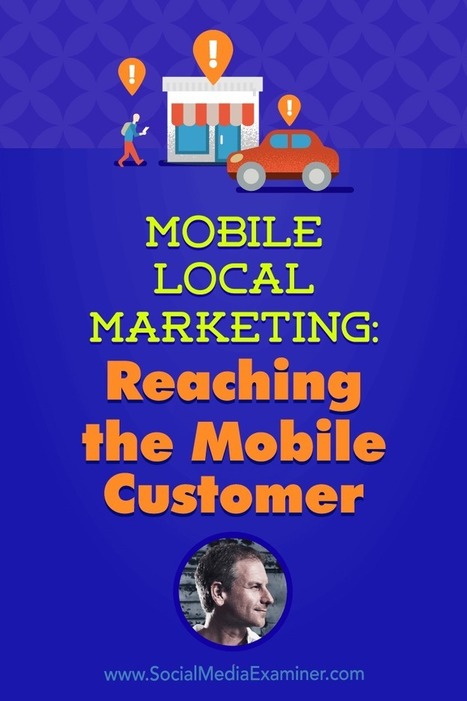



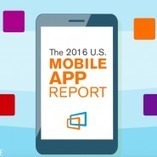


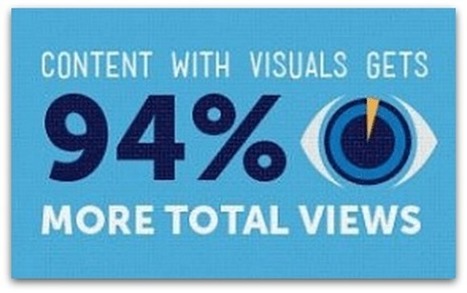

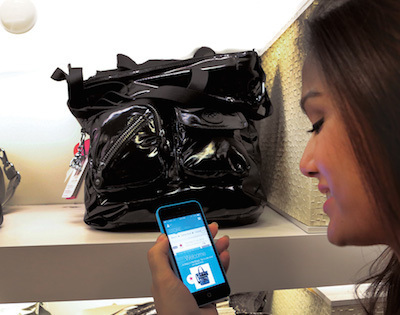
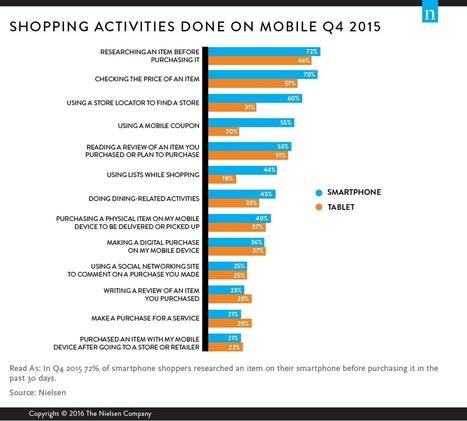
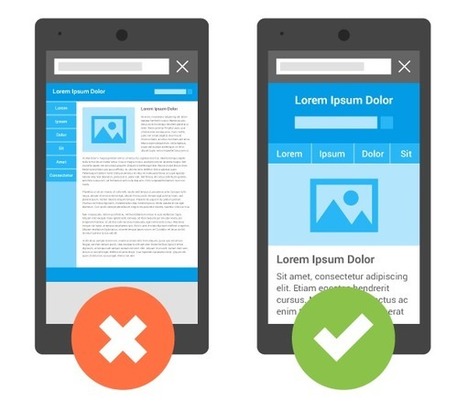






IAB research shows why mobile marketing matters.